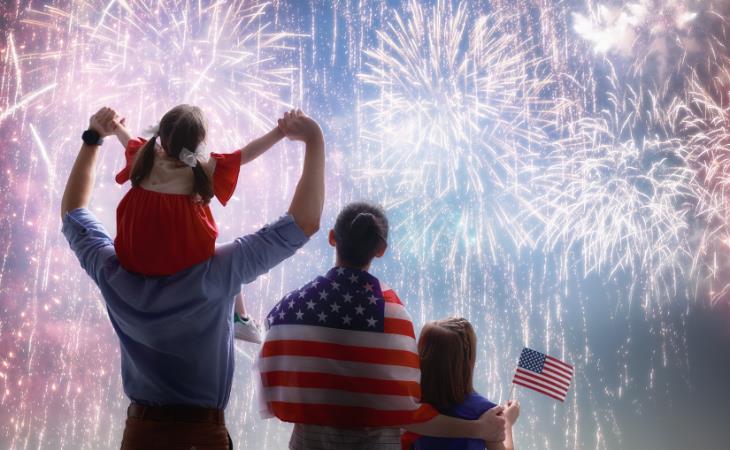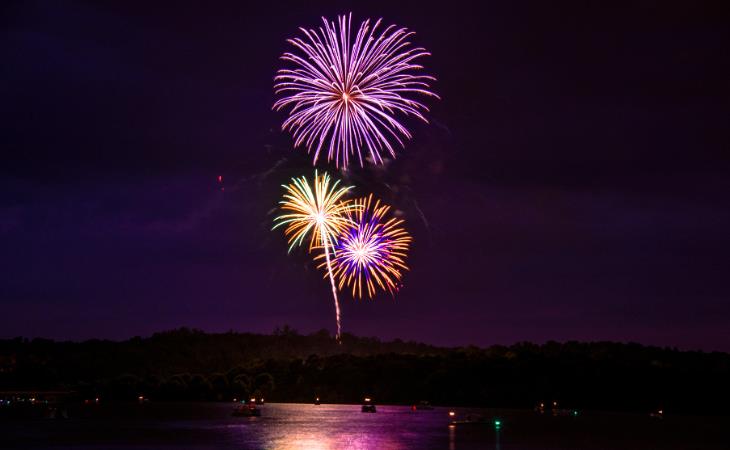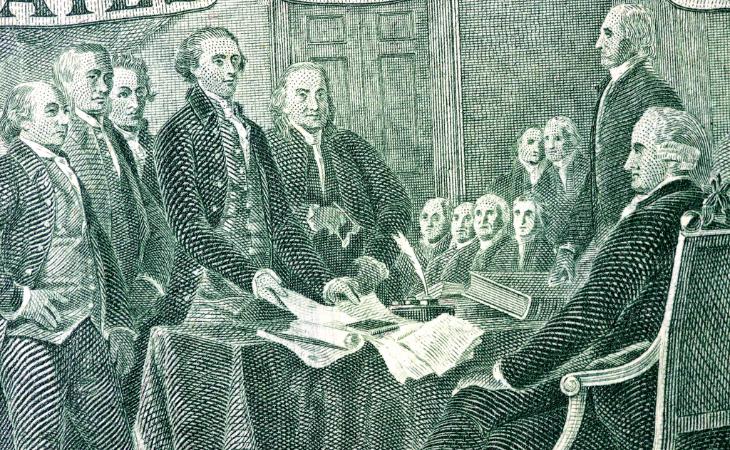While July 4th marks the official celebration of American independence, the signing of the Declaration of Independence actually happened a little later. On June 11th, 1776, the Continental Congress voted in favor of independence. However, the formal document outlining the reasons for this decision wasn't finalized and approved until July 2nd.
John Adams, a leading advocate for independence, believed July 2nd would be forever remembered as the nation's birthday. However, two days later, on July 4th, the Continental Congress adopted the Declaration of Independence, making it the official document signifying the thirteen colonies' separation from Great Britain. Only John Hancock and Charles Thomson signed the document on July 4th, with the remaining signatories adding their names throughout the following month.
2. The first official July 4th celebration was rather modest

Fireworks, parades, and backyard barbecues are synonymous with modern-day July 4th celebrations. However, the first official celebration in 1777 was a much more subdued affair. In Philadelphia, readings of the Declaration of Independence were held, followed by thirteen gun salutes (one for each colony) and celebratory toasts. Festivities continued with military exercises and music but lacked the grandeur of today's elaborate displays. It wasn't until after the War of 1812, when feelings of national pride and unity increased, that July 4th became a more widely accepted and celebrated holiday across the entire country.
3. Hot dogs became a July 4th staple much later
While hot dogs and hamburgers are staples of modern-day July 4th barbecues, these weren't always the traditional fare. In the early days of the holiday, colonists celebrated with more conventional fare, such as roast chicken, fish, and other vegetables. It wasn't until the late 19th and early 20th centuries that German immigrants introduced sausages and frankfurters, which eventually evolved into the hot dogs we know and love today. Their affordability and ease of preparation made them a perfect fit for large gatherings, gradually becoming a beloved part of the July 4th culinary tradition.
4. The original Independence Day fireworks came from China
Fireworks have become synonymous with Independence Day celebrations, but the origin of this tradition dates back to ancient China. The Chinese invented fireworks, and eventually they made their way to Europe and the American colonies. The first recorded use of fireworks to celebrate Independence Day was in Philadelphia in 1777, a year after the Declaration of Independence was adopted. The use of fireworks symbolizes the "rockets' red glare" and the struggle for freedom, becoming a lasting tradition in American culture.
5. Three presidents died on July 4th
The history of the United States is tragically intertwined with July 4th, a day that has witnessed the passing of two of its presidents. John Adams, who served as the second president and played a pivotal role in the struggle for independence, passed away on July 4th, 1826, at the ripe old age of 90. Interestingly, his final words reportedly included, "Thomas Jefferson survives." Little did he know that his dearest friend and co-founder of the nation, Thomas Jefferson, had met his demise just a few hours prior at his Monticello estate, on the same date.
James Monroe, the fifth president, also died on July 4th, but in 1831. This somber coincidence marked the 50th anniversary of the signing of the Declaration of Independence.
6. Independence Day became a federal holiday in 1870
Although Independence Day has been celebrated since the 18th century, it wasn't until June 28, 1870, that Congress designated it as an official unpaid holiday for federal employees. Subsequently, this status was elevated to a paid federal holiday in 1938. The formal recognition of the Fourth of July as a national holiday helped make it a major national holiday, encouraging nationwide celebrations and providing a holiday for many Americans to take part in the festivities.
7. The shortest July 4th Parade is held in California
Parades are a traditional way to celebrate July 4th, with marching bands, floats, and local dignitaries waving to cheering crowds. While some parades can be quite long and elaborate affairs, the title of the shortest July 4th parade goes to a tiny town called Aptos, California. Clocking in at a mere 100 yards, the Aptos parade features a handful of participants, including a local fire engine and a group of enthusiastic children on decorated bikes. Despite its size, the Aptos parade is a treasured tradition that embodies the essence of community spirit and festivity on the Fourth of July.
8. There's a hidden message written on the back of the Declaration of Independence

The Declaration of Independence is a fundamental document that explains the reasons for American independence. While the front page contains the well-known text, there is a little-known detail on the backside, known as the "Rückseite" in German. In addition to several prominent signatures, there are faint markings that are believed to be notes of endorsement written by delegates who were present but did not ultimately sign the document.
The exact content and purpose of these notes remain a subject of debate among historians even today. Some believe they represent simple affirmations of support, while others theorize they might reflect reservations or disagreements about specific aspects of the Declaration. Regardless of their meaning, these hidden markings offer a fascinating insight into the internal discussions and decision-making process surrounding this important document.
Related: These Maps Illustrate Little-Known Facts About America
9. The Fourth of July almost had a different name

The very name "Fourth of July" is deeply rooted in American tradition. But the moniker wasn't always an obvious choice. In the early days, there were several names used to refer to Independence Day, such as "Independence Day," "The Glorious Fourth," and even "The Anniversary of the National Independence." One particularly interesting alternative was "The Fourth of July, a Signal of a Glorious Revolution." However, this proposed title was considered too long and unwieldy. Nevertheless, it reflected the celebratory yet revolutionary nature of the holiday. Eventually, for the sake of practicality and brevity, "Fourth of July" became the universally recognized name for America's Independence Day."








